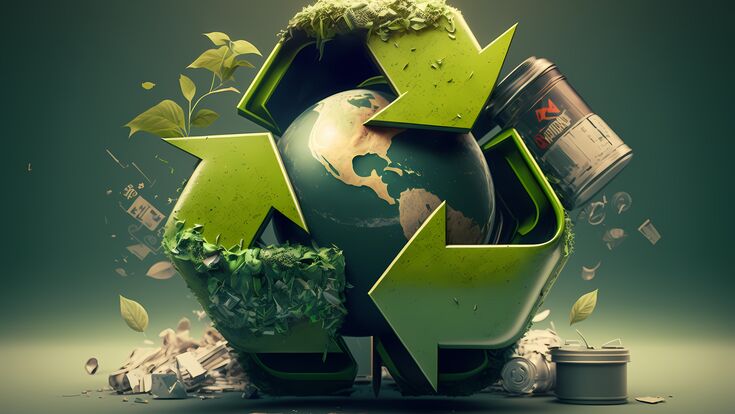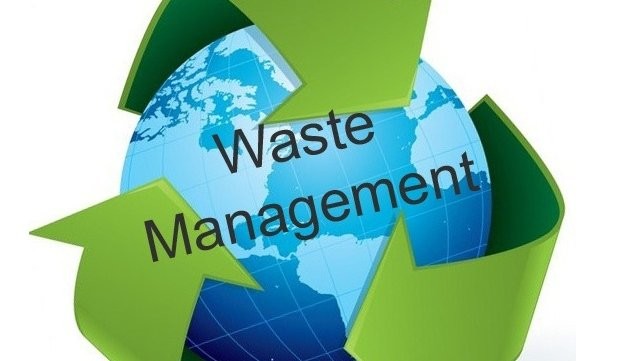Just How Recycling Lives Services Make a Distinction in Sustainable Waste Management
Just How Recycling Lives Services Make a Distinction in Sustainable Waste Management
Blog Article
Exploring Different Sorts Of Waste in Modern Waste Management Equipment
The contemporary landscape of waste monitoring includes browsing a complicated variety of waste kinds, each calling for specialized handling and disposal techniques to reduce environmental impacts. Local solid waste, unsafe waste, electronic waste, and natural waste each present distinctive difficulties and opportunities for resource recuperation.
Community Solid Waste
Metropolitan solid waste, often referred to as family garbage or waste, incorporates a range of disposed of products produced by property, industrial, and institutional resources within a community. This waste stream generally consists of products such as packaging, food scraps, yard trimmings, paper, plastics, fabrics, and thrown out household products. The monitoring of municipal strong waste is an essential component of urban preparation and public wellness, requiring efficient collection, transport, and disposal systems.
Reliable waste management systems are developed to decrease environmental impact while making best use of resource healing. This frequently entails a combination of strategies including composting, landfilling, and recycling. Reusing programs target materials like paper, glass, metals, and specific plastics, diverting them from garbage dumps and reestablishing them right into the manufacturing cycle. Composting organic waste, such as food scraps and backyard trimmings, not only decreases land fill usage but additionally generates useful dirt amendments.
Districts should additionally address the logistical and economic obstacles associated with waste management. Applying pay-as-you-throw systems, improving public recognition, and investing in innovation can dramatically boost waste diversion prices. By incorporating these techniques, towns can cultivate sustainable communities, lower greenhouse gas exhausts, and conserve natural resources.
Contaminated Materials

Effective harmful waste monitoring involves a number of vital actions: identification, disposal, therapy, and partition. Segregation makes sure that unsafe products are kept separately from non-hazardous waste to stop cross-contamination.
Regulative structures, such as the Source Conservation and Recovery Act (RCRA) in the USA, provide guidelines and requirements for dangerous waste administration. Adherence to these regulations, combined with advancements in waste therapy technologies, is important in mitigating the threats related to contaminated materials.
Digital Waste
Digital waste, generally described as e-waste, stands for a swiftly growing challenge in waste monitoring systems globally. This kind of waste encompasses disposed of digital gadgets and equipment such as mobile phones, computers, tvs, and other electronic devices. The rapid speed of technological improvement, combined with lowering item lifespans and customer need for the most recent tools, has tremendously boosted the quantity of e-waste produced yearly.
E-waste is especially problematic as a result of its intricate structure, often containing unsafe substances like mercury, lead, and cadmium, which pose considerable environmental and wellness risks otherwise appropriately managed. Alternatively, e-waste additionally contains important products such as gold, copper, and silver, which can be recouped and recycled. The dual nature of e-waste-- both dangerous and beneficial-- requires specialized handling, recycling, and disposal procedures.
Effective e-waste management includes rigid regulative structures, durable collection systems, and advanced reusing modern technologies. Public recognition and involvement are vital, as read what he said inappropriate disposal practices, such as unlawful unloading and casual recycling, aggravate ecological contamination and carcinogen. Enhancing e-waste management methods is crucial for minimizing eco-friendly effect and recuperating valuable resources in a progressively digital world.

Organic Waste
Organic waste, comprising kitchen area scraps, yard trimmings, and agricultural deposits, represents a substantial part of the worldwide waste stream. This sort of waste is naturally degradable, go to these guys meaning it can be damaged down by bacteria right into easier natural compounds. Regardless of its capacity for natural decomposition, inappropriate monitoring of natural waste can cause adverse ecological effects, consisting of the exhaust of greenhouse gases such as methane, which add to climate modification.
Effective management of organic waste is important for lessening these ecological effects (recycling lives services). Composting is a widely embraced approach, changing organic waste into nutrient-rich garden compost that can improve soil health and wellness and agricultural performance. Additionally, anaerobic food digestion is an emerging technology that transforms natural waste into biogas, a renewable resource resource, and digestate, which can be used as fertilizer
Municipalities and waste administration entities have to apply durable natural waste collection and therapy programs to make the most of the advantages of these processes. Public education projects can likewise play a pivotal role in motivating homes and organizations to separate organic waste from various other kinds of waste. By prioritizing the administration of organic waste, cultures can decrease land fill use, reduced greenhouse gas discharges, and develop valuable results for agricultural usage.

Innovative Waste Administration
In the realm of waste administration, ingenious techniques are changing how societies handle their refuse, going for sustainability and efficiency. These developments incorporate a variety of innovations and techniques that boost reusing rates, reduce land fill dependency, and reduced ecological effect. One prominent development is the application of smart waste bins geared up with sensors that monitor fill degrees and enhance collection paths. This not just lowers gas intake however additionally reduces greenhouse gas exhausts.
An additional noteworthy growth is the fostering of waste-to-energy (WtE) innovations. By converting non-recyclable waste right into functional power via processes such as incineration and anaerobic digestion, WtE minimizes landfill problem and gives a renewable resource resource. In addition, innovations in chemical recycling permit the breakdown of complicated plastics right into their original monomers, allowing the creation of new, high-grade plastic items.
Additionally, the circular economic situation version is gaining traction, stressing the style of products and systems that focus on reusability and resource performance. This holistic method urges markets to minimize waste generation from the outset. With these innovative methods, modern waste administration systems are not only resolving the immediate obstacles of garbage disposal but likewise leading the means for a more lasting future.
Final Thought
An extensive understanding of local strong waste, contaminated materials, electronic waste, and natural waste, paired with the implementation of a knockout post ingenious waste monitoring options, is essential for reducing ecological impacts. Integrating modern technologies such as clever waste bins and waste-to-energy systems can enhance effectiveness and sustainability. Reliable waste monitoring methods not only foster resource recuperation however likewise advertise public understanding and involvement, ultimately adding to the advancement of a round economic situation.
The modern landscape of waste monitoring entails navigating an intricate variety of waste types, each needing specialized handling and disposal techniques to alleviate environmental impacts. Metropolitan strong waste, dangerous waste, digital waste, and natural waste each existing unique difficulties and possibilities for resource recuperation.Electronic waste, frequently referred to as e-waste, represents a rapidly expanding challenge in waste administration systems worldwide. Via these ingenious approaches, modern-day waste management systems are not only dealing with the prompt difficulties of waste disposal yet additionally leading the way for a more lasting future.
A thorough understanding of metropolitan solid waste, hazardous waste, digital waste, and natural waste, paired with the execution of ingenious waste administration options, is essential for minimizing ecological impacts. (recycling lives services)
Report this page